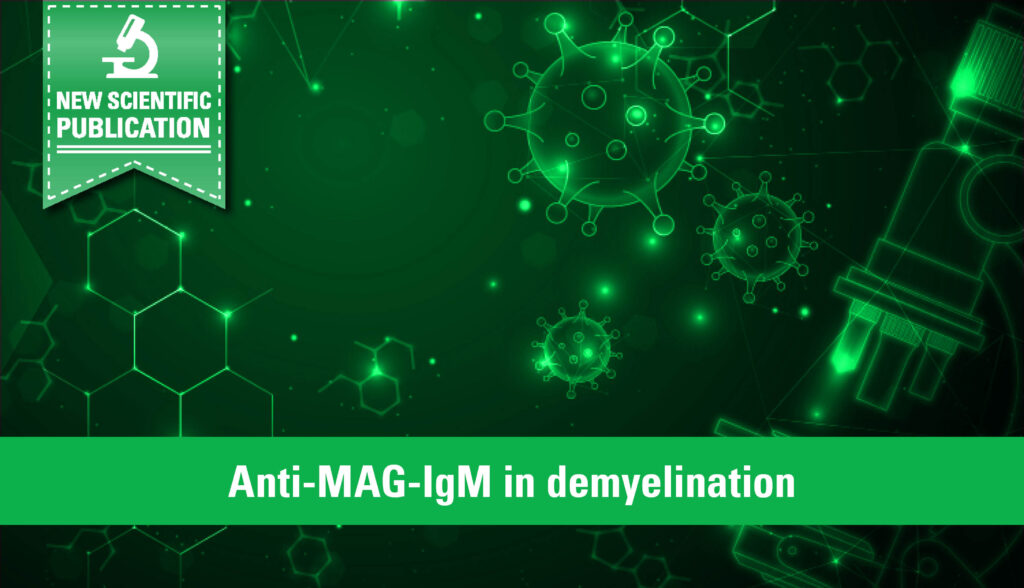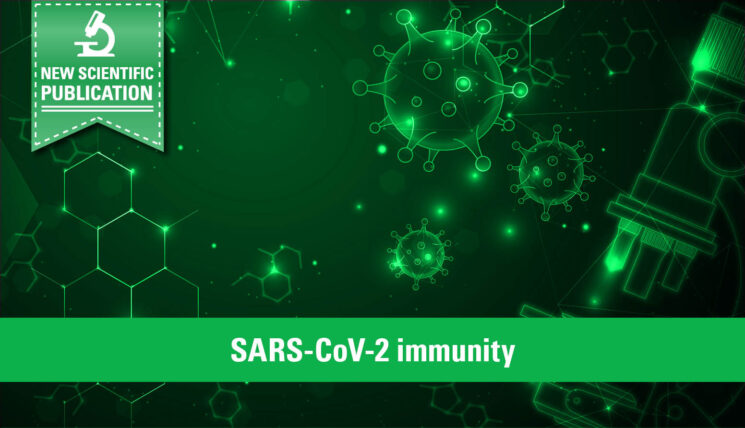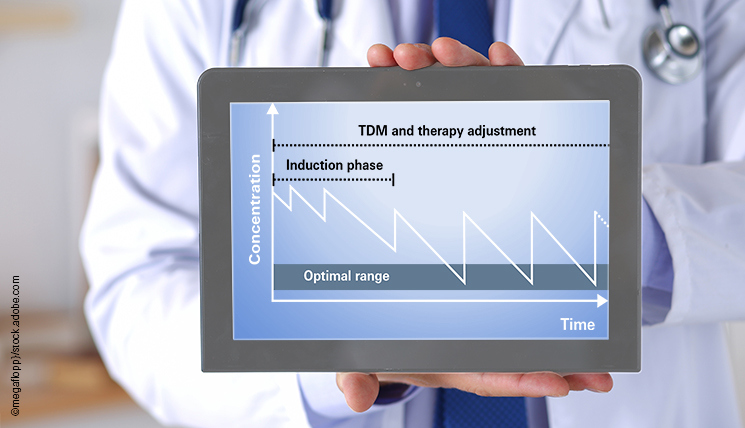Cakes and biscuits are an integral part of Christmas traditions. But unfortunately they are not a treat that everyone can enjoy. Many grains such as wheat, rye and spelt contain gluten. This is made up predominantly of gliadin, which is only partly digested in the intestine. The resulting smaller protein structures, so called oligopeptides, can reach the underlying connective tissue, where they are bound by the enzyme tissue transglutaminase (tTG) and modified (deamidated). In individuals with a genetic predisposition, the resulting complexes of tTG and gliadin oligopeptides can trigger an immune reaction and the formation of specific antibodies. This immunological overreaction causes inflammation of the small intestinal wall and leads to corresponding symptoms. If the damage progresses, the small intestinal epithelium can no longer absorb sufficient nutrients (malabsorption), leading to deficiencies of important vitamins and minerals.
Gluten intolerance, known as coeliac disease, is a chronic autoimmune disease, which cannot be cured. However, with a strict gluten-free diet the immune reaction abates and the level of antibodies decreases.
The clinical picture of coeliac disease is very diverse. Typically, the disease manifests at an early age. When infants consume their first gluten-containing foods, the typical symptoms such as chronic diarrhoea, vomiting, abdominal pain and cramps can occur. The resulting malabsorption then leads to weight loss, anaemia, growth disorders and delayed puberty. But coeliac disease can also manifest in adulthood, and in these cases can be associated with untypical symptoms such as constipation, osteoporosis, joint disorders, depression, miscarriages or the chronic skin condition dermatitis herpetiformis (Duhring’s disease).
Coeliac disease should therefore not be excluded simply because typical symptoms such as diarrhoea or weight loss are not present. Notably, overweight and obese persons can also suffer from coeliac disease. Because of its diverse symptoms coeliac disease has been referred to as the chameleon of gastroenterology. Moreover, it is not a rare disease, with a prevalence of around 1%. Additionally, a large number of undiagnosed cases is suspected, as often neither the patient nor the physician thinks of coeliac disease. According to recommendations from ESPGHAN (European Society for Paediatric Gastroenterology Hepatology and Nutrition), coeliac disease should be taken into account more often even in cases of unspecific or non-gastrointestinal symptoms.
While damage to the intestinal mucosa can be identified by intestinal biopsy, serology is becoming more and more important in terms of differential diagnostics of coeliac disease. The determination of antibodies specific for coeliac disease is recommended in symptomatic patients of all age groups. The most important method is the detection of anti-tTG antibodies of immunoglobulin class A (IgA). These autoantibodies are specific for coeliac disease and do not occur in healthy individuals or patients with other diseases. In the case of a high anti-tTG IgA titer (i.e. a titer of at least tenfold the upper limit of normal (≥10x ULN)), a confirmatory indirect immunofluorescence test (IIFT) is performed with a second blood sample. In IIFT the anti-tTG antibodies are known as anti-endomysium antibodies (EmA) since they react with the connective tissue layer endomysium. If the EmA IgA detection is also positive, a diagnosis of coeliac disease can be made without the need for a biopsy. As patients with coeliac disease suffer from IgA deficiency with above average frequency, the determination of total IgA is also recommended. With negative or low titers of anti-tTG or low total IgA, a biopsy remains necessary for diagnostics, but should be supplemented by further tests such as IgG antibodies against deamidated gliadin peptides (DGP), tTG or EmA.
Coeliac disease-specific antibodies can be determined using different methods. Anti-Tissue Transglutaminase ELISAs (IgA, IgG) from EUROIMMUN are highly specific and sensitive monospecific tests that are ideally suited for fully automated processing of many analyses. Due to its excellent specificity and sensitivity the IIFT for detection of EmA is especially suitable for the confirmation of a positive anti-tTG IgA result. Liver or oesophagus is generally used as substrate, whereby the two substrates provide equivalent sensitivity and specificity. Another increasingly important antibody test in coeliac disease diagnostics is the determination of antibodies against deamidated gliadin peptides (DGP). The development of a novel recombinant gliadin-analogue fusion peptide (GAF-3X) containing only the diagnostically relevant epitopes of the gliadin molecule has greatly increased the sensitivity and specificity of the test. The detection of IgG antibodies against DGP plays an important role in the context of IgA deficiency which is often associated with coeliac disease. By combining the determination of anti-tTG IgA and anti-DGP IgG the serological detection rate for coeliac disease is significantly increased. The immunoblot EUROLINE Coeliac Disease Profile enables multiparameter detection of both antibodies. The EUROLINE Autoimmune Gastrointestinal Diseases Profile allows determination of further antibodies in addition to both of these parameters for differential diagnostics of autoimmune gastrointestinal diseases.
The determination of a genetic predisposition can also be included in diagnostics. Although ESPGHAN does not recommend the determination of the hereditary characteristics HLA-DQ2 and HLA-DQ8 as absolutely necessary, it can provide useful information in some cases, including in patients with relevant family history. However, since around a third of the healthy population possesses the HLA-DQ2/HLA-DQ8 alleles, their detection alone does not suffice for diagnosing coeliac disease. Rather their determination is suited for exclusion diagnostics, since without these alleles coeliac disease is very unlikely. Using the microarray test system EUROArray HLA-DQ2/DQ8-h Direct from EUROIMMUN the analysis is easy, does not require any previous knowledge of molecular biology and can be evaluated fully automated.
Once coeliac disease is diagnosed, the implications go far beyond Christmas treats. Adherence to a strict gluten-free diet is the only reliable option to limit the immune reactions and prevent continued damage to the intestinal epithelium. Even under a strict gluten-free diet regeneration of the mucosa can sometimes take several years, although the antibody concentration decreases within a few months. A recently published paper from ESPGHAN provides recommendations for follow-up of patients with coeliac disease and monitoring of the gluten-free diet. The first follow-up examination should be performed after 3 to 6 months with measurement of anti-tTG IgA antibodies. In the case of IgA deficiency, IgG assays for anti-DGP, anti-tTG or EmA are recommended. With adherence to the diet the antibody titer usually normalises over time (<1x ULN) and further check-ups can be performed at longer time intervals of 12 to 24 months. It is important to use the same test systems for follow-up in order to avoid discrepancies between different assays.
Would you like to find out more? Gluten-free Christmas treats are unfortunately not part of our portfolio, but we are always happy to give advice on our test systems for coeliac disease diagnostics and related automation solutions. Take a look at our website or contact us directly: Coeliac disease | EUROIMMUN.





